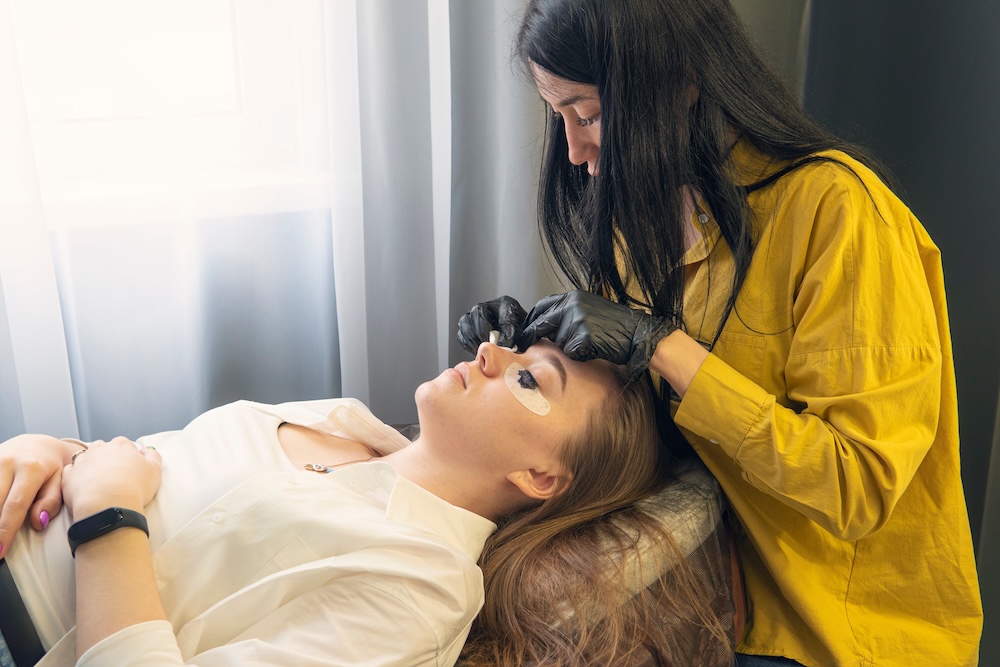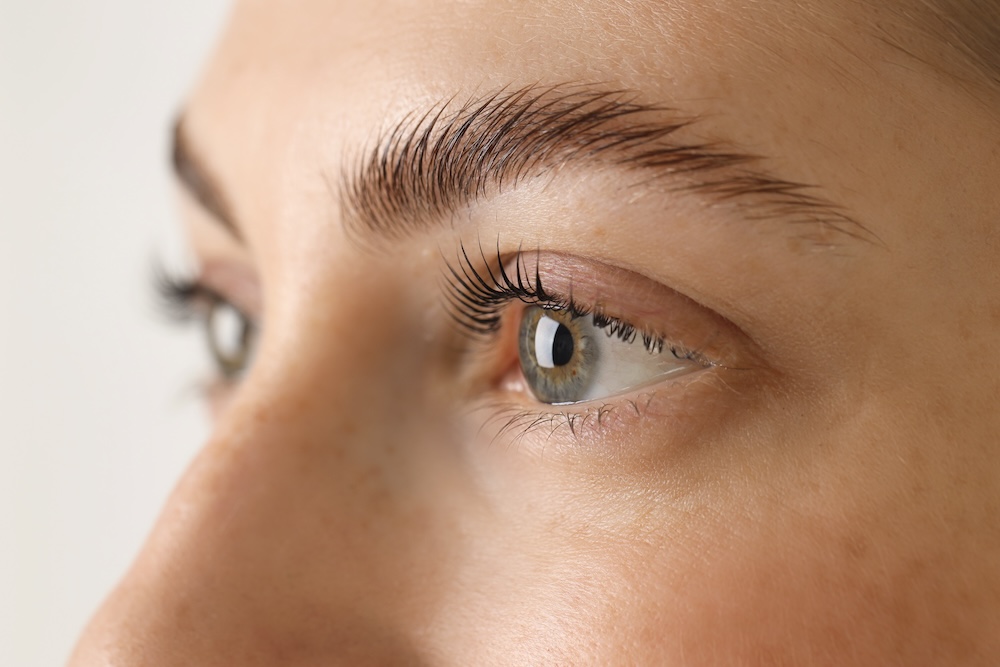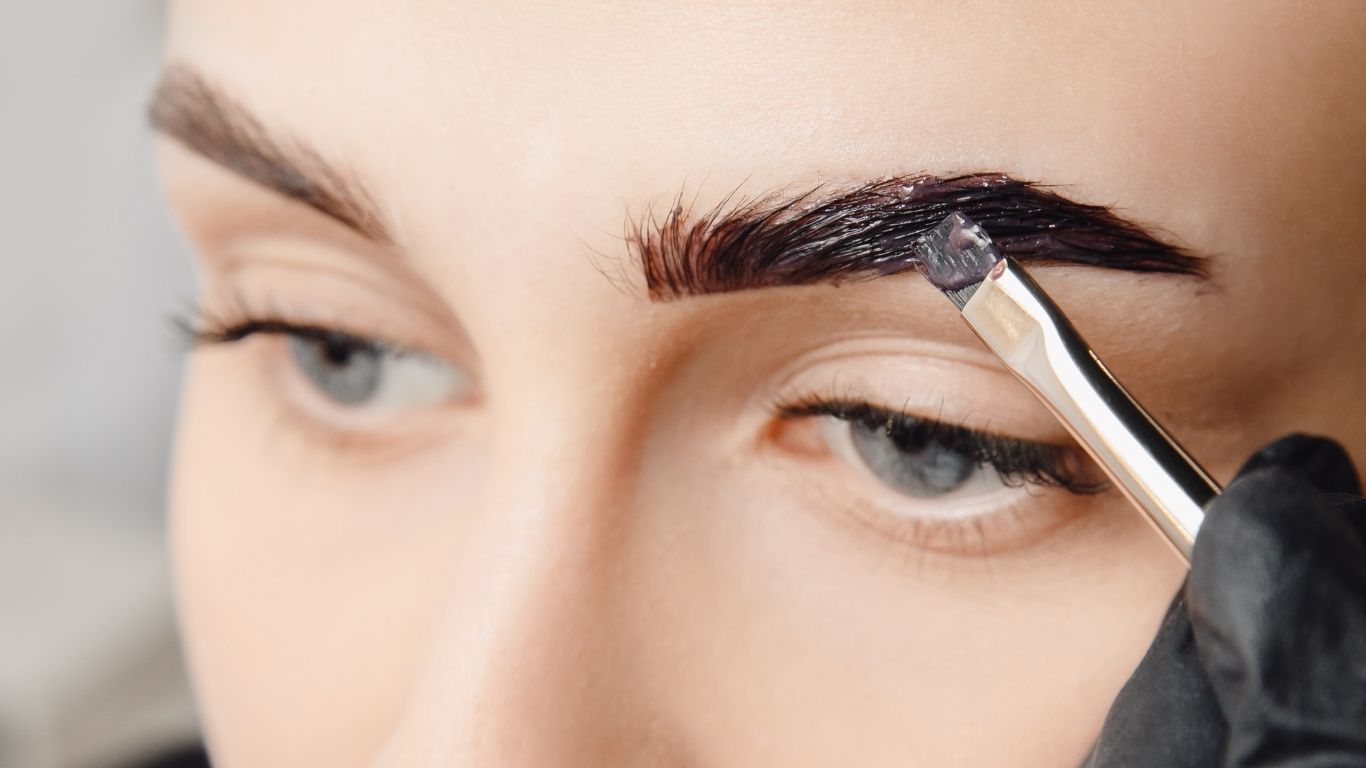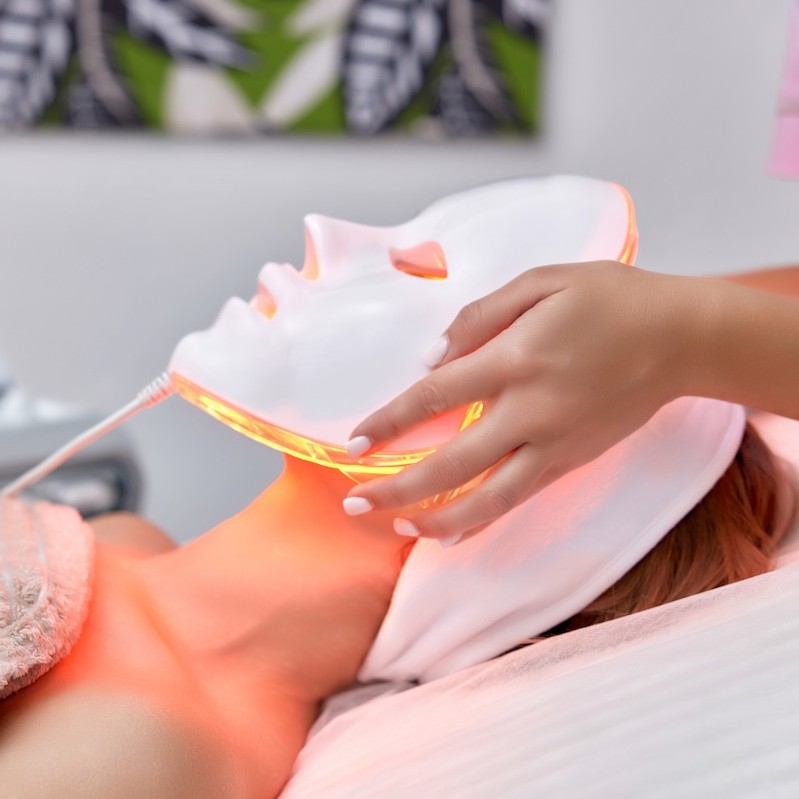Understanding tint ingredients, reactions and safety protocols for clients with sensitivities
Tinting services are a salon staple, but managing potential allergens in brow and lash tints is crucial for client safety and compliance. With ingredients like PPD and resorcinol known to trigger sensitivities, beauty professionals must stay informed about patch testing, aftercare and emerging PPD-free tint options.
What causes allergic reactions in brow and lash tints?
Adverse reactions to tinting products are uncommon but can happen, especially if clients are sensitive to certain ingredients.
According to Kaitlyn Callaghan, educator and owner of Ibrowsbyk and Byk Training Academy in North Lanarkshire, “Adverse reactions can sometimes happen due to ingredients including ammonia, paraphenylenediamine (PPD), resorcinol or peroxide.
“PPD is a chemical substance found within most brow and hair tints, and while the majority of clients will be absolutely fine with the ingredient, it can sometimes be an irritant and allergen.
“PPD requires oxygen to become active, which is why you always have to mix your tints with a developer to oxidise it. A higher level of PPD is mostly found in tints that are black and dark brown in colour, so you should always be more cautious of these.
“While tints containing PPD are perfectly safe to use, it is always best to leave this to the professionals.”
Laura Wilson, training manager at Apraise, adds that “the most common allergen in brow and lash tints is para-phenylenediamine (PPD) and related aromatic amines (e.g., PTD/PTDS). PPD is a known skin sensitiser and the leading cause of contact allergy from hair and lash dye products.”
She explains that “although darker shades contain more PPD, they both can still cause a reaction if the ingredient causing the allergic reaction is present.”
Are there safer or PPD-free tint alternatives?
With growing client awareness around skin sensitivities, many salons are seeking hypoallergenic or PPD-free brow tint options. Wilson says, “The lesser-used other option out there is silver nitrate; however, the performance is inferior.”
She notes that while there’s increasing demand for ‘cleaner’ formulations, including plant-based dyes, salons must remain vigilant.
“While these appeal to clients, ‘natural’ does not equal non-sensitising (henna and plant extracts can also cause reactions). Salons should verify ingredient lists, SDSs and performance claims before recommending alternatives, always ensure patch testing, conduct thorough client consultations and ensure good record keeping.”

What do allergic reactions to brow and lash tints look like?
Recognising the signs of a tint allergy is key to protecting clients and preventing escalation.
Callaghan says, “If a client is allergic to PPD and has a reaction, symptoms can range from mild to being serious very fast. A mild reaction would present as a stinging or burning sensation, itching and swelling, or a red rash that is often raised which should typically disappear after a few days.
“If a more severe reaction were to happen, this could cause a local blister which could last for several weeks – you would then advise your clients to apply a gentle emollient to this area.”
Wilson adds that while severe cases are rare thanks to patch testing and professional standards, “the client may feel some irritation during the treatment, but this may not be the case in a mild reaction, where they may experience redness, itching, localised swelling, tingling or burning around the lash/brow line that develops within hours to a few days.”
She stresses that beauty therapists are trained to recognise more serious symptoms: “Severe reactions may show rapid swelling of eyelids/face, intense pain, blistering, difficulty breathing, systemic symptoms (hives, faintness) – these are medical emergencies (anaphylaxis, possibly) and require immediate medical attention, this is why patch testing is advised and this occurrence is not so common.”
The importance of patch testing
Patch testing remains the most effective way to reduce the risk of an allergic reaction.
Callaghan explains, “A patch test is a safety precaution that should always be taken seriously to protect yourself, your business and your client. This allows you to check for adverse reactions before trying something new. This precaution should always be done 48 hours prior to the procedure.”
Wilson agrees, “Always follow the manufacturer’s instructions. Apply a small amount behind the ear or on the inner forearm, cover if instructed, and observe for at least 24-48 hours for any reaction. If the client experiences burning, itching, redness or swelling, they should remove the product with a cool, damp pad and inform their therapist they had a reaction.”
However, she cautions that patch tests aren’t foolproof. “Patch tests reduce risk but are not 100% predictive. False negatives occur (a test site may not react, but sensitive facial/ocular skin might), and prior sensitisation can produce rapid, severe responses despite a negative test.
“Always follow additional safeguards – keep product off eyelid skin, use protective barriers, and have emergency procedures ready. Things like eye wash in the first aid kit are good practice.”

How to educate clients about tint allergies
Good communication and documentation are key to salon safety and compliance.
“Explain risks clearly at booking and again before treatment,” says Wilson. “Provide verbal and written information about patch tests, possible reactions, and aftercare.
“Complete clear and concise client consultation and record client consent and patch test outcomes in their record. Emphasise that previous tolerance does not guarantee future safety.”
Aftercare and what to do if a reaction occurs
For mild irritation, Wilson advises, “Remove the product immediately with water, advise cool compresses, and suggest over-the-counter soothing measures (e.g., preservative-free ocular lubricants for the eye area, if recommended by a pharmacist).
“If there is persistent irritation, swelling, blistering or any sign of systemic involvement, refer to emergency or dermatology care. Keep records, photograph the reaction if the client consents, and report the event to the manufacturer.”
She adds, “For severe reactions (anaphylaxis, breathing difficulty, ocular injury), call emergency services immediately. These measures are commonly taught in beauty therapy training, and it is good to refresh your knowledge and training from time to time.”
Staying compliant and up to date
As the beauty industry evolves, so do regulations. Wilson advises, “Cosmetic and professional product rules evolve; stay updated with regional cosmetics regulations and manufacturer safety guidance.
“Routinely review SDSs and manufacturer patch test protocols. It may be an idea to check in with your insurance provider to see if they require any additional steps to ensure you are covered.”
The takeaway
Allergic reactions to brow and lash tints are rare when professionals follow safety procedures and client care protocols.
By understanding key allergens such as PPD, conducting thorough patch testing, and maintaining transparent client communication, brow techs and lash artists can ensure tinting services remain safe, compliant and confidence-boosting for every client.
FAQ: brow and lash tint allergens
What causes allergic reactions in brow and lash tints?
The most common allergen is PPD. Other triggers include resorcinol, preservatives, and fragrance ingredients. Darker tints often contain more PPD.
How can allergic reactions be prevented?
Conduct a patch test 24-48 hours before treatment, review ingredients, and educate clients on risks. Use protective barriers and follow manufacturer instructions.
Are PPD-free tints completely safe?
No. PPD-free and natural dyes reduce risk but can still cause reactions. Patch testing is always essential.
What are the signs of an allergic reaction?
Mild: redness, itching, swelling, tingling, or burning. Severe: rapid swelling, blistering, pain, or difficulty breathing; seek emergency care immediately.
What should be done if a client reacts?
Remove the product, apply cool compresses, suggest gentle soothing products, and refer to medical care if symptoms persist. Record and report the incident.
How can salons stay compliant and safe?
Keep up to date with regulations, follow manufacturer patch test protocols, review SDS sheets, maintain client records, and refresh staff training regularly.
You might also like:




